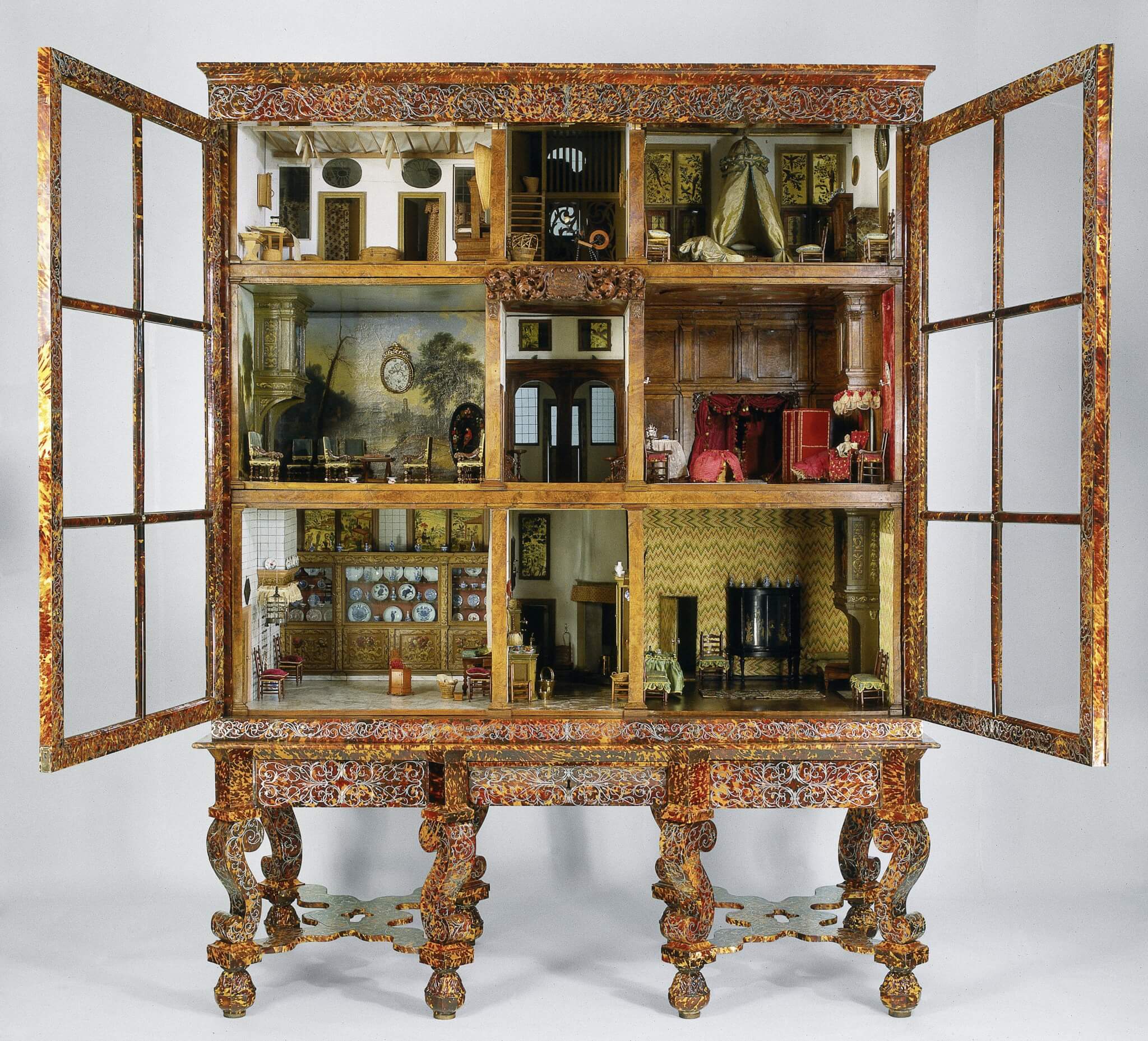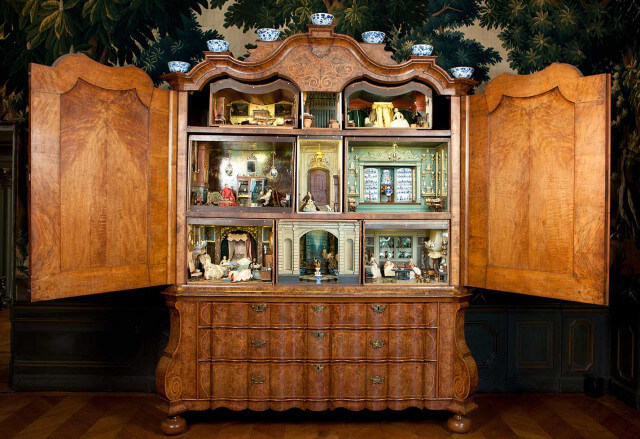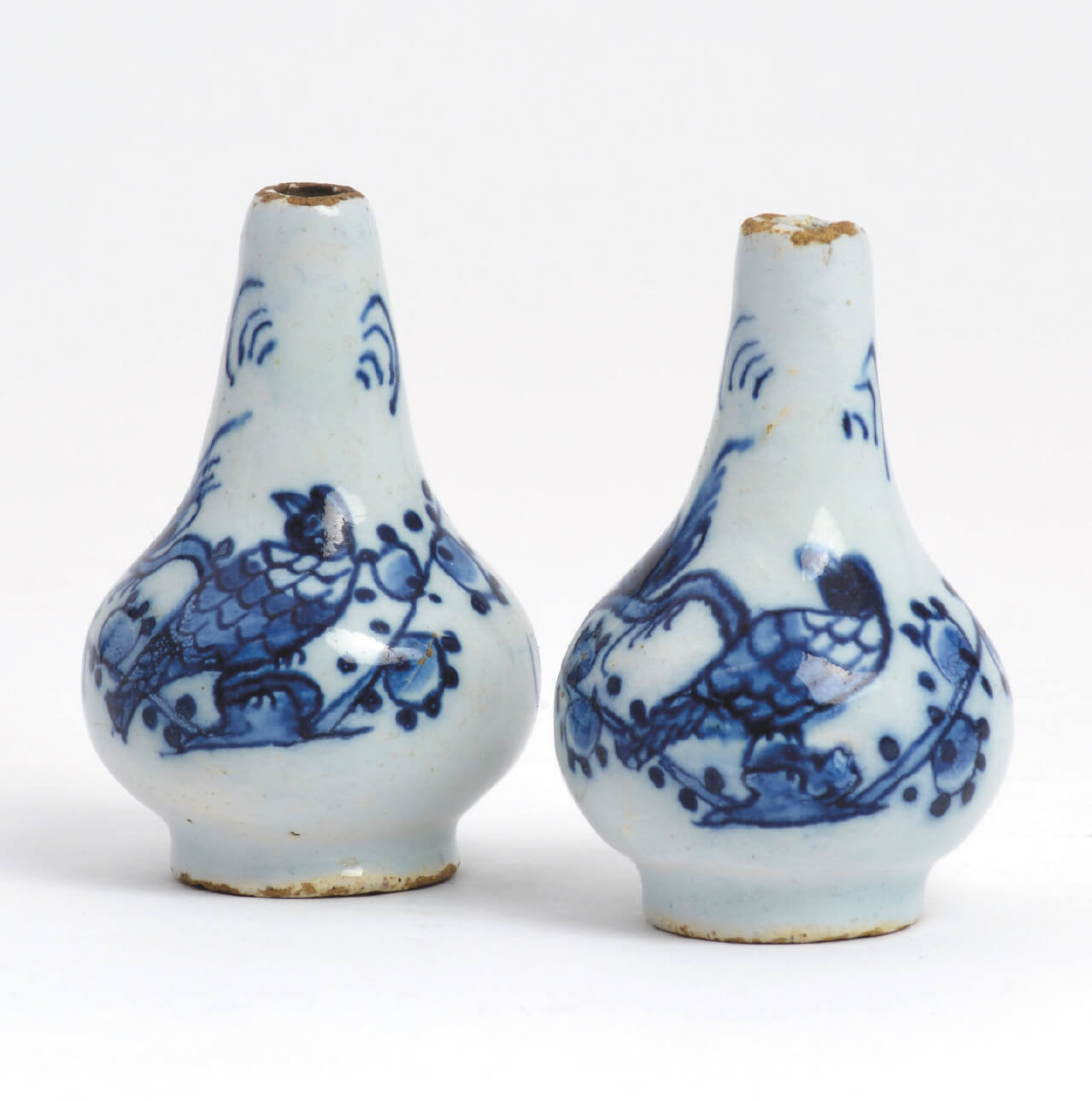
Dollhouses and Delftware Miniatures
According to the French anthropologist and ethnologist Claude Lévi-Strauss, miniature, that is to say the reproduction of an object in a reduced scale, is an art work that changes our relationship to the world. Its small size allows us to apprehend the object as a whole, as miniatures have an “intrinsic aesthetic quality”. They change the perception we have of our environment in an entirely comprehensible experience that is graspable in its totality. In La pensée sauvage, Lévi-Strauss explains: “[reduction] results, it seems, by somehow reversing the epistemological process: in order to know a real object in its totality, we tend to proceed from its parts … on the other hand in the scale model, knowledge of the whole precedes knowledge of the parts.”

From the fifteenth century, miniature objects were a fixed part of the curiosity cabinet (kunstkabinet), where they were grouped as artificialia, which are objects that are created or modified by man. Miniatures were also displayed on mantelpieces, shelves or as wall decoration. Like Petronella de la Court, the wife of a rich Amsterdam silk merchant, miniatures became a favorite attraction of wealthy ladies who collected and displayed them in their magnificent dollhouses. Wealthy collectors often showcased their treasures in art cabinets to curious visitors, and this also included collectors of dollhouses. The dollhouses were seen as objects of interest and entertainment, and they have continually attracted attention.[1]
The possession of a dollhouse was a special distinction in the seventeenth and eighteenth centuries. Fueled by a certain spirit of competition, each room in these dollhouses was decorated with the utmost precision. Petronella de la Court’s dollhouse contained more than 1600 miniature objects. According to Pijzel-Dommisse, she spent a total of 20,000 guilders, which equals the price of a real canal house in Amsterdam. Dollhouses were very rare and inventories only sporadically show cabinets or cupboards with doll’s goods.[2]
One of the most impressive and well-preserved Dutch dollhouse was owned by Petronella Oortman. Assembled by Oortman between 1686 and 1710, the large cupboard contained nine rooms, and was finely decorated with marquetry of turtle and tin. In 1718 its value was estimated at between 20,000 and 30,000 guilders. In the eighteenth century, visitors from the Netherlands and abroad would visit the house, and could even reference a catalogue published about the dollhouse.[3]

Another exceptional dollhouse that remains today was of Sara Rothé, a childless wife of a merchant in eighteenth century Amsterdam. In 1743, when she was 44 years old, she started designing a large dollhouse in a custom made cupboard. The design process of Rothé’s dollhouse is known because she recorded the construction and decoration of the house in a notebook. Moreover, it is possible to retrace the name of many talented craftsmen through her notebook. The house contained more than 180 miniatures made of silver, glass, porcelain, textiles but also small paintings. Amongst those, some of the finest Delftware miniatures were also found. For example, nine beautiful garden vases remain and four of them were filled with plants. Also, she commissioned the production of a set of ten large plates and eight small ones in order to display them in the kitchen room. Unfortunately, it is not known which factory produced them. As a matter of fact, she did not mention anything in her notebook about the procurement of Delftware miniatures.

During the Golden Age of Holland, miniatures were often sold at annual markets or kermis and were called poppegoet (doll’s ware). Rapidly, they played an important social role amongst wealthy Europeans. Miniatures were distinguished by two different groups and uses. The larger groot poppegoet or large doll’s wares were conceived as children’s toys. The smaller miniature objects, which were called poppegoet or doll’s wares, were intended to distract adults.[4] As can be seen in Sara Rothé’s dollhouse, these miniatures were just as the life-size objects made of several materials, such as wood, silver, copper, glass, textiles, paintings and ceramics. During the eighteenth and nineteenth centuries, small-scale objects were presented as models to potential customers. However, most of the Dutch miniature furniture was probably made to decorate dollhouses or as children’s toys.

Some secondary sources mention that apprentices had to execute miniatures as a test to obtain the title of master. However, no documents or prints from the guild materials prove this assumption. On the contrary, it has been proven that apprentices were expected to make a life-size object with perfect dimensions.
The miniature ceramics were initially imported by the Dutch East India Company (VOC) from China, where they mostly were produced for the Western market. The miniatures were so successful that the Delft potters, seeing a great business opportunity, created their own. Delft factories gradually rejected the original Chinese influences and incorporated European decoration and design into their objects.

Some of the Delftware miniatures were created by ‘thuiswerkers,’ who were home-based craftsmen who fired small pieces like tea wares and doll wares in small private ovens. The most elaborate and rare miniatures were produced by the larger factories like De Vergulde Blompot (The Gilt Flowerpot) or De Witte Ster (The White Star). Similar earthenware pots and pans are found in the dollhouses of Petronella Dunois, Petronella de la Court and Maria van Egmond van de Nijenburg. The blue-painted saucers and garden vases and the white colander and bowls in Sara Rothé’s dollhouse in The Hague were certainly produced in Delft. Because the plates had to fit exactly in a dish rack, they were undoubtedly produced on commission.[5]
Decorated dollhouses and its miniatures form an important source for our knowledge of Dutch interiors in the seventeenth and eighteenth centuries. Since only fragments of interiors have survived in recent centuries, reliance has been placed on other primary source materials such as estate inventories, floor plans, design drawings, descriptions and images of interiors. Therefore, these houses and miniatures constitute an extremely precious document. Besides the provided information about the design and display of the contemporary objects, these extraordinary objects procure a fairly reliable image of wealthy household life at that time.
[1] Pijzel-Domisse, Het Hollandse pronkpoppenhuis, Interieur en huishouden in de 17de en 18de eeuw, 2000, p. 24.
[2] Pijzel-Domisse 2000 (note 1), p. 18.
[3] Pijzel-Domisse 2000 (note 1), p. 247.
[4] Pijzel-Domisse 2000 (note 1), pp. 22 and 34-35.
[5] Pijzel-Domisse 2000 (note 1), pp. 34-35.
[6] Pijzel-Domisse 2000 (note 1), p. 49.



